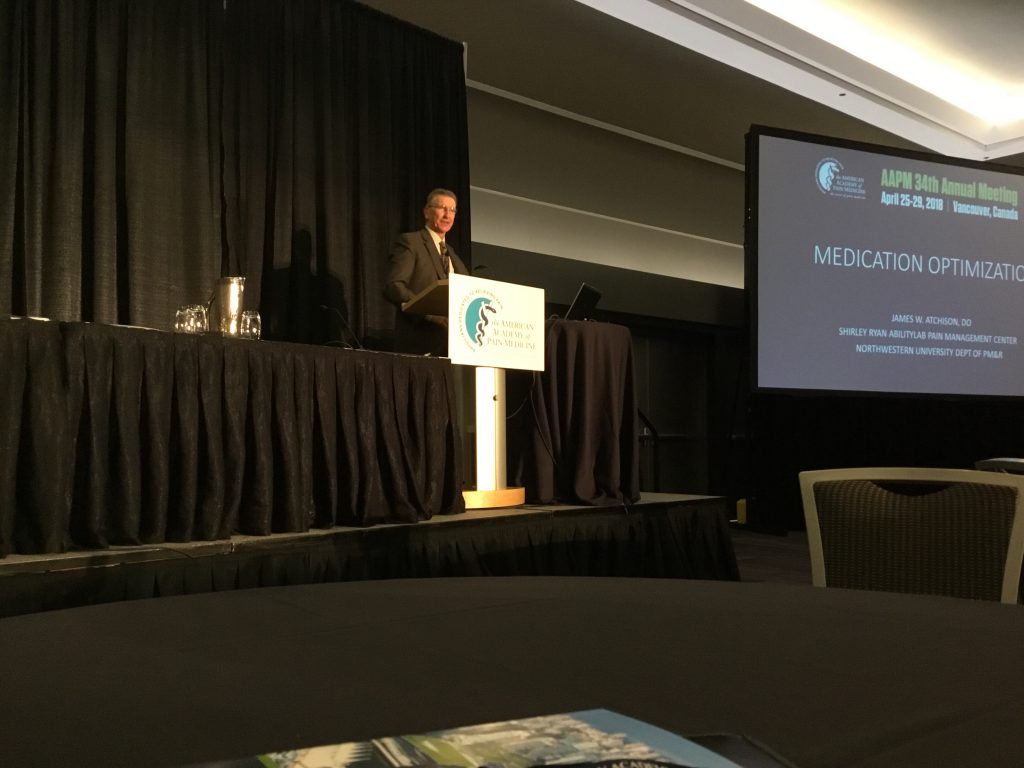Medication Tapering
At the 2018 American Academy of Pain Medicine Annual Meeting, James Atchison, DO, with Shirley Ryan AbilityLab discussed medication tapering.
Opioid reduction/tapering is a key element in any interdisciplinary pain management program. The goal is to reduce the medications while at the same time offering alternative pain management strategies. The goal is not to criticize the patient for using opioids, but instead focus on giving them new tools to assist with their pain.
Usually by the time a person gets to a pain management program, it is established that the medication is not solving the problem. The patient may resist this at first, but it is important to point out whether they are at the desired level of functioning. It’s also important to talk to the patient about short-term and long-term side effects of the medications.
As you phase the patient off the opioids, it may be necessary to use some other drugs to manage elements of pain such as sleep disorder or anxiety. Patients should not be taking opioids to help them sleep as they should be used to promote activity. Opioids may decrease anxiety but they also will impair your brain function. Anxiety is better managed with medications focused on those symptoms.
Opioid tapering not only involves reducing the dosage of the medications, but also transitioning to alternative opioids which can result in a lower morphine dosage. The tapering process can take a long time and you have to access how each patient responds to the tapering. If you go too quickly the patient will resist and the tapering will not be successful. You also need to make sure you have a full understanding of all the medications the patient is taking.
You also need to teach the patient the different treatment tools BEFORE you start the drug tapering.
Tapering pathway
- Change one medication at a time so you can gauge impact and side effects.
- If physiological withdrawal is present, then slow down.
- If sleep worsens, slow down and treat it.
- If depression worsens, slow down and stop until antidepressants take effect.
- Taper long acting until complete then start on slow acting.
- Slow the percentage reduction as the total MME gets lower.
- Determine whether to reduce dose or frequency.


